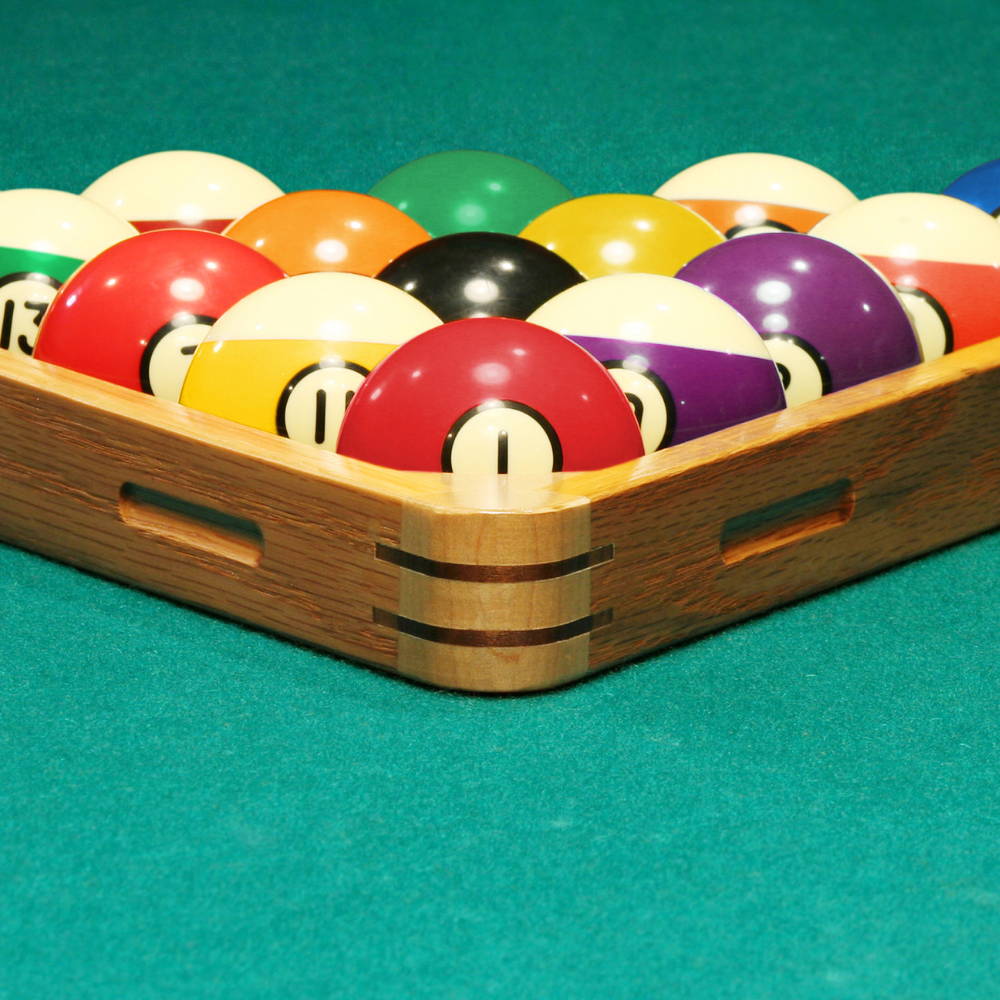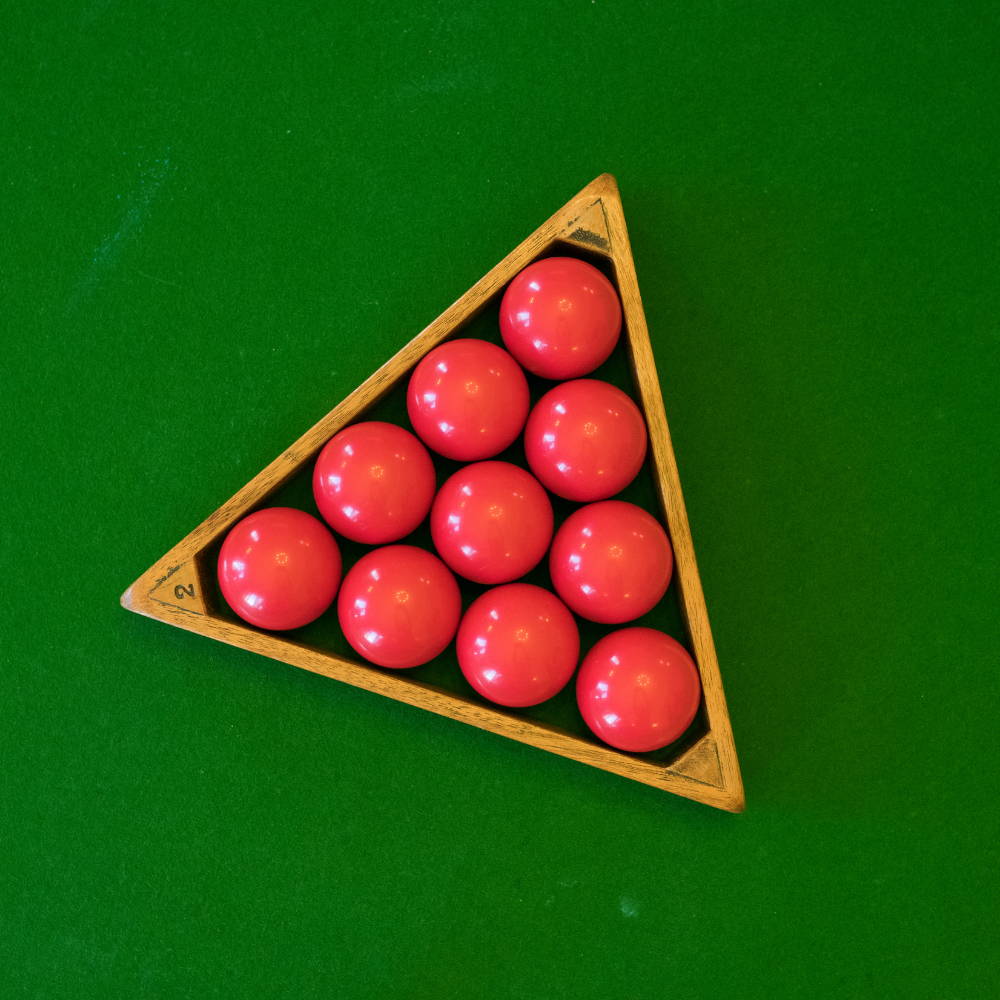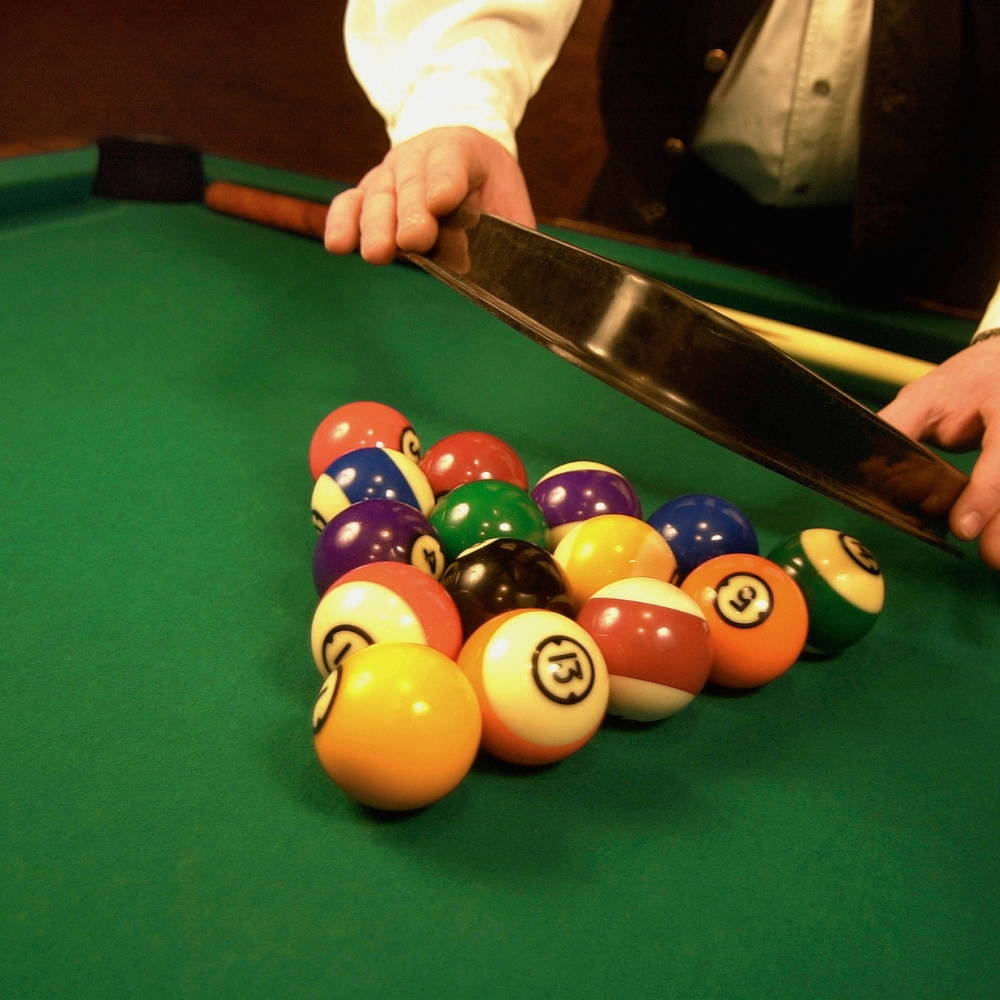Racking Them Up: The History and Significance of Different Pool Racks
The Origins of Pool Racking: A Historical Glimpse
One cannot trace the exact origins of pool racking without first diving into the broader history of billiards. The game's evolution from its grassy outdoor origins in the 15th century to the indoor tables of today brought many innovations. Among those developments, the method to set up balls for each game's start played a significant role. Early forms of billiards didn't require specific racks, but as games diversified and specific rules established, the need for standardized setups became evident.
The Triangle Rack: Birth of an Icon
The most recognized rack, the triangle, came to prominence with the rise of games like eight-ball. As eight-ball's predecessors involved fewer balls, the addition of more balls required a tighter, more structured setup to ensure a fair break. The triangle rack, accommodating 15 balls in five rows, offered a symmetrical and snug fit, ensuring balls were in contact with one another, a crucial aspect for an effective break.

The Diamond Rack: A Nine-Ball Revelation
Nine-ball, a variant of pool that gained significant traction in the 20th century, required a different racking structure. The diamond rack, a trimmed down version of the triangle, is designed for the nine balls used in this game. This rack shape ensures that the 1-ball sits at the apex, the 9-ball at the center, and all other balls without specific positional requirements. Its design highlights the significance of both the first and central ball, pivotal points in the game of nine-ball.
Other Racks: Adapting to Diverse Games
With countless pool games played worldwide, other rack shapes have emerged to cater to specific game requirements. Straight pool, for example, employs a triangle rack but often starts with only 14 balls, leaving a space open for strategic play. Meanwhile, games like seven-ball utilize a hexagonal rack, emphasizing its smaller number of balls and unique game dynamics. These specialized racks not only accommodate different numbers of balls but also subtly change the game's strategy and dynamics.
The Art and Craft of Racking
While racking may seem a straightforward task, ensuring all balls are tightly packed is an art in itself. Proper racking can drastically impact the game's flow, affecting the break's outcome and subsequent ball spread. Over the years, techniques like "pattern racking" have been debated, where balls are arranged in specific sequences to benefit a player. Recognizing the importance of a fair start, many official tournaments now have precise racking guidelines.
Materials and Evolution: From Wood to Plastic
Just as pool tables and cues have evolved, so too have racks. Earlier racks were primarily wooden, carved intricately and matched with the aesthetic of gentlemanly billiard rooms. As the sport gained a wider audience and moved to various settings, the need for more durable and standardized racks grew. Plastic and composite materials, offering durability and precision, soon became the norm. Modern racks often incorporate clear materials, allowing both players and spectators to ensure balls are tight and racked correctly.
Symbolism of the Rack: Beyond the Game
Beyond their practical utility, pool racks have grown to symbolize the game itself. They represent the game's order, structure, and potential energy awaiting release. The moment of the break, with balls scattering, is one of the most thrilling in pool, embodying the unpredictable nature of the game and life itself. The rack, in this context, is a reminder of the order from which chaos emerges and the patterns that underlie seemingly random events.

Understanding the Importance of the Rack in Competitive Play
Ensuring Fair Play
The rack's primary purpose in pool games is to ensure an equal starting point for every player. In professional matches, especially, the way balls are racked can provide an advantage or disadvantage to the player making the break. A tightly racked triangle allows for a better spread of balls upon breaking, which can result in a more open table and higher chances of pocketing a ball. A loose rack, on the other hand, can hinder this spread, making the game more challenging right from the outset.
Racking Controversies
Throughout pool's history, controversies related to racking are not uncommon. One such controversy revolves around "pattern racking." As the name suggests, this is the deliberate arrangement of balls in a particular order or pattern that could benefit the breaker. This method is considered unsportsmanlike and is forbidden in most professional tournaments. The introduction of "template racks" – thin, flat racks that remain on the table during the break – came as a solution to ensure a tight rack every time, minimizing inconsistencies and potential advantages.
The Break: A Crucial Element
The break shot is often considered the most crucial in pool games. The initial spread of balls can dictate the flow of the entire game, setting the stage for an aggressive offensive or a defensive strategy. Given the significance of this shot, the rack's role becomes even more vital. A well-racked set of balls ensures that the break's outcome is primarily based on skill rather than luck or a flawed setup.
Referees and The Art of Racking
In significant professional tournaments, referees are responsible for racking the balls. This responsibility highlights the importance of a correct rack. These referees undergo training to ensure they rack the balls consistently and fairly for all players. The objective is to minimize any advantage or disadvantage that could arise from the rack, ensuring that the game's outcome is determined by players' skills and strategies.
Evolution and Standardization
As with every other aspect of sports, the process of racking in pool has seen standardization, especially in professional settings. Many tournaments now use specific racking templates to ensure consistency. Some even employ advanced tools like laser guides or computer-aided systems to confirm that balls are positioned precisely as required. This push for standardization underlines the significance of the rack in ensuring fairness and maintaining the game's competitive integrity.
Influence on Amateur and Recreational Play
The principles of racking aren't only relevant at the professional level. Amateur and recreational players can also benefit from understanding the importance of a well-racked set of balls. It provides an opportunity to practice breaks under consistent conditions and understand the game better. Many pool aficionados invest in quality racks and even racking tutorials to improve their game, indicating the widespread acknowledgment of the rack's pivotal role.

Conclusion: An Emblem of Evolution and Tradition
Racks, in their varied forms, stand as symbols of pool's rich history and its continuous evolution. While they serve a primary functional purpose, their significance in the game's strategy, fairness, and symbolism cannot be understated. From the iconic triangle to the specific diamond, racks underscore the game's diversity and the intricate balance between tradition and innovation. As pool continues to captivate hearts and minds globally, the rack will remain a central figure, holding within its confines the essence of challenge, strategy, and surprise.
Are you looking for a Pool Table? check out our pool tables range Pool Tables





